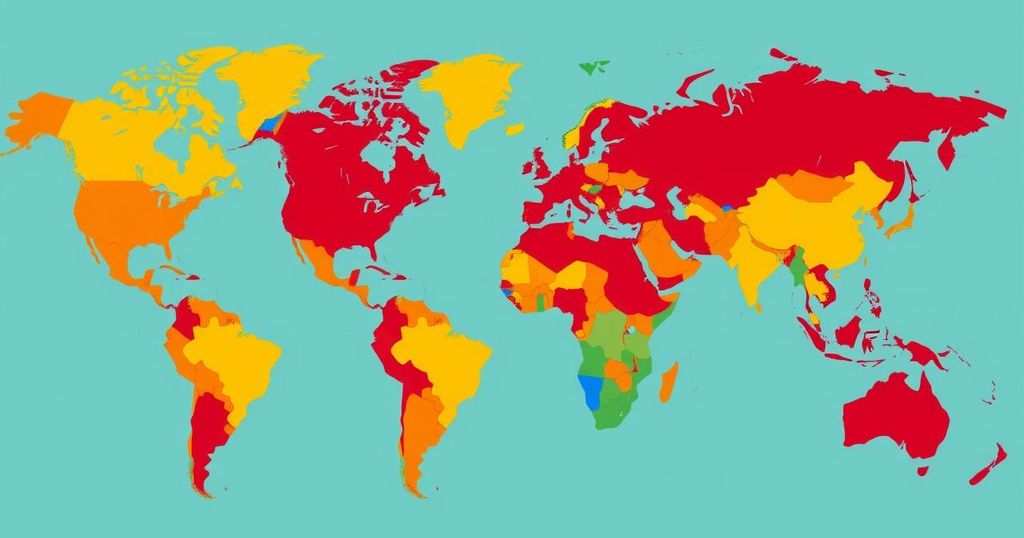The U.S. Department of State has issued Level 4 travel advisories for several countries, including Afghanistan, Lebanon, and Ukraine, due to rising crime, political instability, and security threats. This marks a significant change for traditionally popular destinations as American travelers are cautioned against visiting them during the upcoming spring break season. The travel industry is expected to adapt to this new reality, highlighting the importance of safety and informed travel planning.
The U.S. Department of State has elevated travel advisories for numerous destinations, particularly in Latin America and the Caribbean, to Level 4 (Do Not Travel). Countries such as Russia, Jamaica, Colombia, Belarus, Yemen, Syria, and Mexico are impacted by these updates due to escalating concerns about crime, political unrest, and terror threats. As spring break nears, these warnings have altered American perceptions of these traditionally popular tourist locations.
These destinations have historically attracted travelers for their rich culture and stunning scenery; however, the latest advisories underscore an alarming increase in violent crime including kidnappings and armed robberies. Such developments illustrate a deteriorating security environment for both locals and visitors, prompting the American government to issue urgent travel recommendations.
The U.S. Department of State categorizes travel advisories into four levels, with Level 4 representing the gravest concerns regarding safety and security risks. These advisories caution against travel due to ongoing conflict and substantial danger in particular regions. This swelling list of countries under Level 4 advisories is indicative of rising global threats as American citizens are advised to reconsider travel plans to many unsafe locales.
As of February 2025, countries under a Level 4 advisory include Afghanistan, the Democratic Republic of the Congo, Lebanon, the Central African Republic, Belarus, Iraq, Ukraine, Venezuela, and Haiti. Each situation reflects severe ongoing conflicts, political instability, and significant risks to travelers’ safety, thereby necessitating clear travel restrictions.
In Afghanistan, resurgence in Taliban violence has led to serious safety concerns, with U.S. citizens facing risks of kidnapping and terrorism. The Democratic Republic of the Congo is similarly dangerous due to persistent conflict and armed militias. The U.S. government warns travelers to remain cautious or avoid these areas altogether.
Lebanon’s political unrest and economic crisis have created dire conditions for travelers, with U.S. citizens at risk of violence and potential terrorism. Likewise, the Central African Republic illustrates a high risk of armed conflict as ongoing violence poses significant dangers to visitors.
In Belarus, political oppression and unstable governance create a hostile environment, particularly for foreign nationals. Similarly, Iraq continues to be fraught with violent threats and terrorism threats from groups such as ISIS. The ongoing war in Ukraine further impacts safety with significant civilian risks due to active combat zones.
Venezuela’s political and economic turmoil has led to severe security threats, with rampant crime and instability. In Haiti, gang violence and the lack of effective law enforcement have made travel risky, with U.S. citizens frequently targeted. Iran also presents dangers due to ongoing political strife and potential for detentions.
Travelers to these high-risk countries are urged to be vigilant and well-informed through the U.S. State Department’s travel advisories. Essential safety measures include registering with the Smart Traveler Enrollment Program (STEP) and securing robust travel insurance.
The expansion of Level 4 advisories is anticipated to significantly impact the travel industry, prompting airlines and tour operators to revise their offerings based on shifting safety landscapes. This situation underscores the necessity for travelers to remain informed and to approach their travel plans with consideration for their safety.
As we approach spring break, awareness of these updated advisories is critical for American travelers. The issuance of Level 3 and Level 4 travel advisories serves as a compelling reminder for travelers to prioritize safety and informed decision-making while planning their vacations.
In conclusion, U.S. travelers are faced with an increased number of Level 4 travel advisories as spring break approaches, highlighting the growing safety risks in certain popular destinations. These advisories underscore the significance of informed decision-making and adhering to safety protocols. The travel industry will likely adjust its practices in response to these advisories, emphasizing the need for travelers to stay vigilant and plan responsibly for their trips.
Original Source: www.travelandtourworld.com






